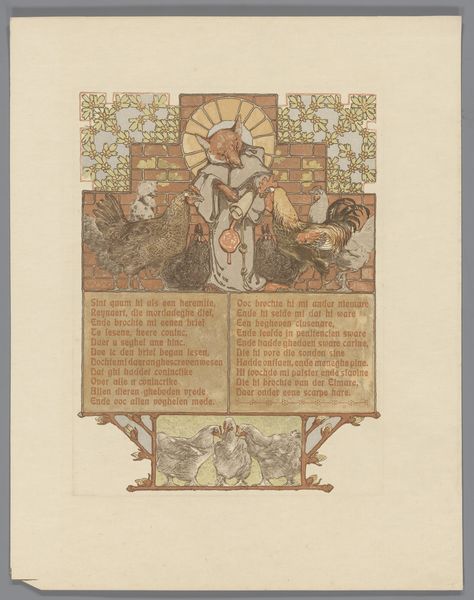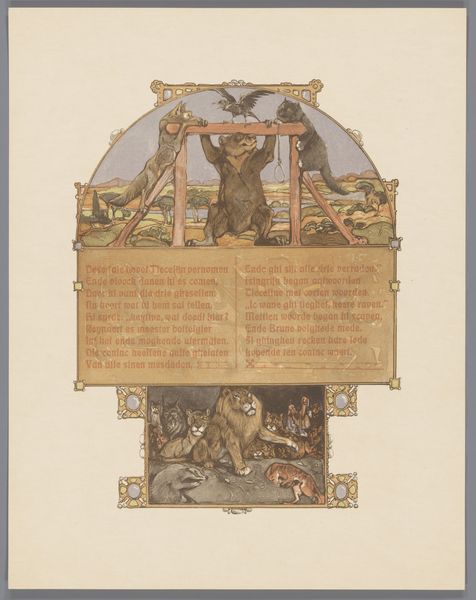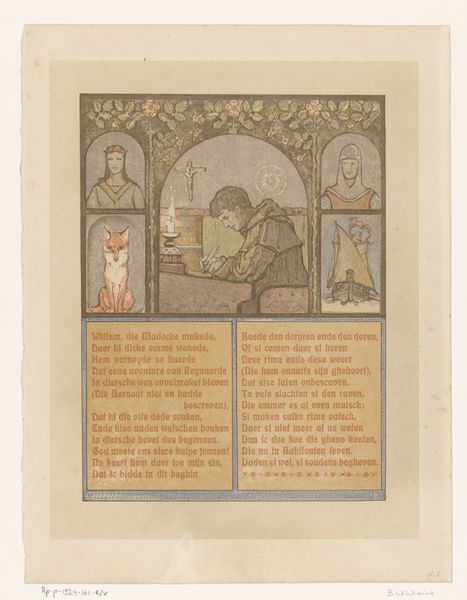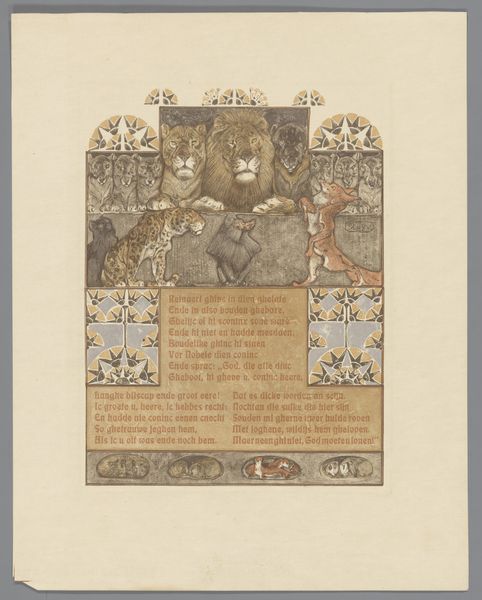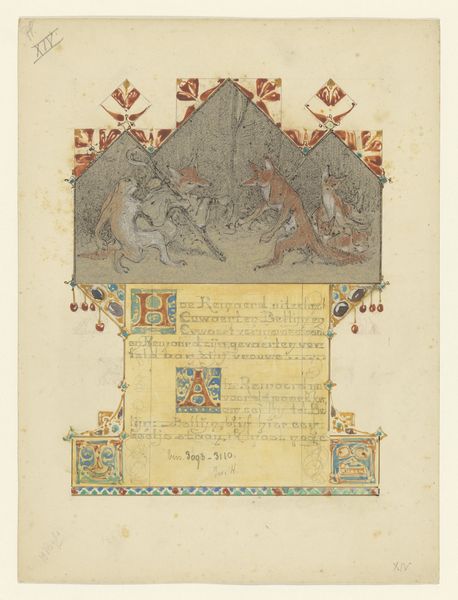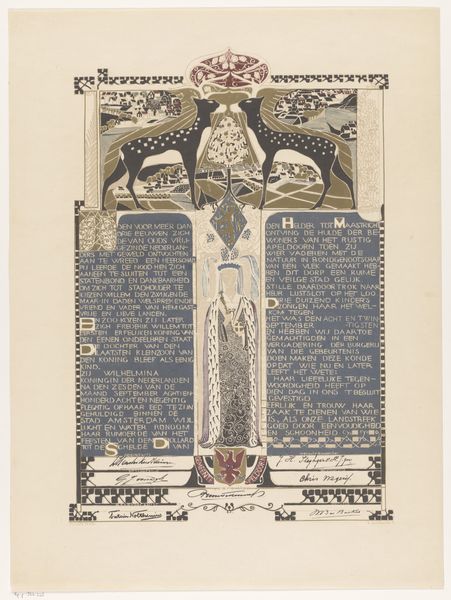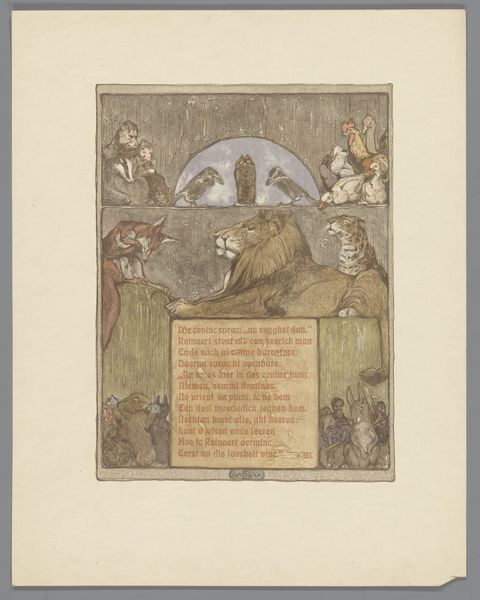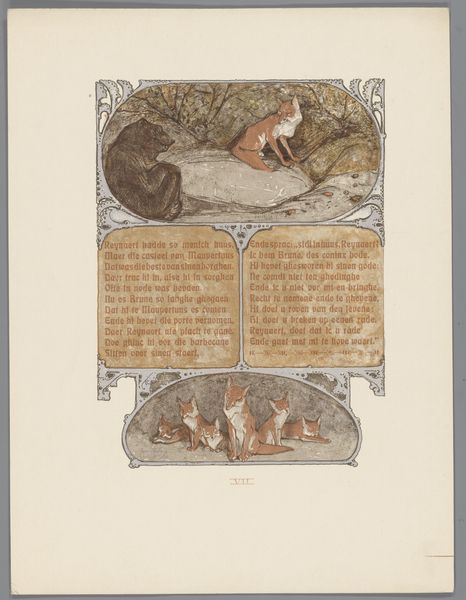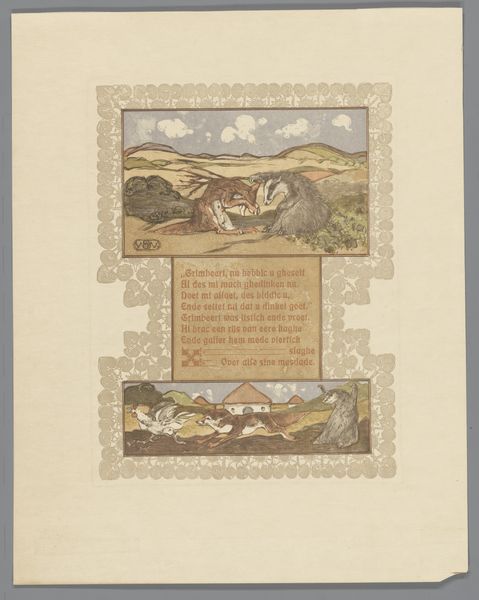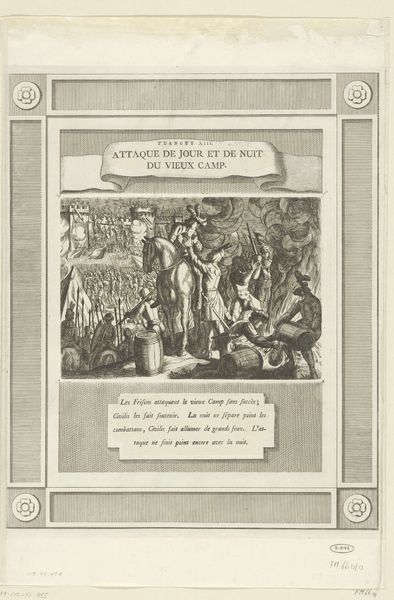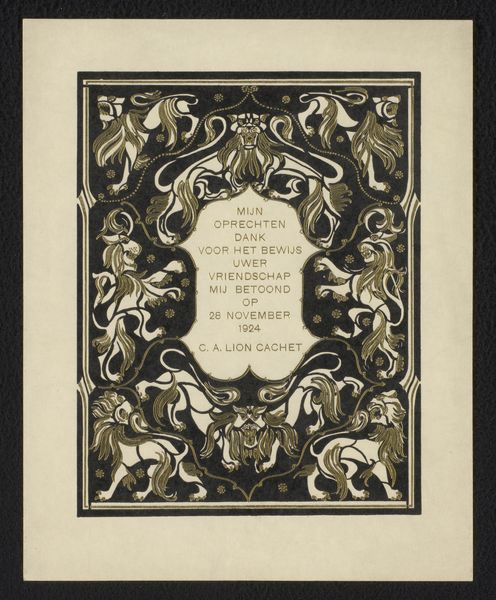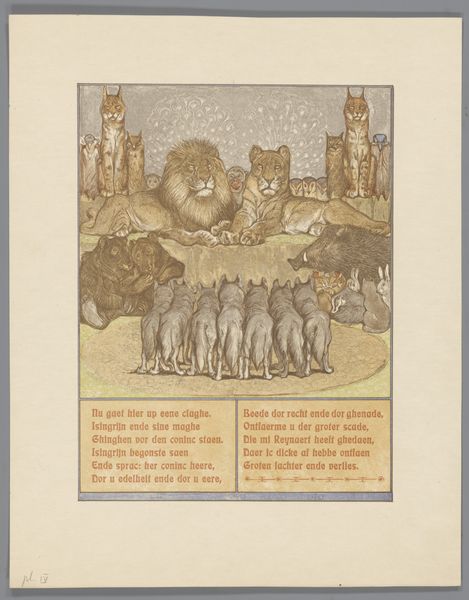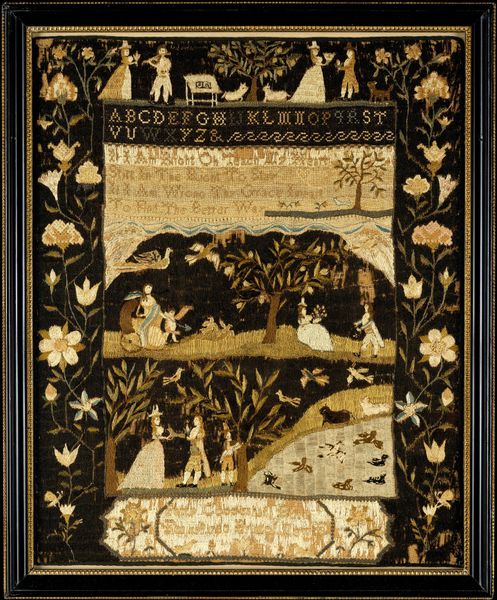
Vos in monnikspij (Reinaert) met haas (Cuwaert) bij vossin (Hermeline) en welpen in vossenhol 1910
0:00
0:00
watercolor
#
art-nouveau
#
water colours
#
narrative-art
#
watercolor
#
folk-art
#
watercolour illustration
#
watercolor
Dimensions: height 330 mm, width 261 mm
Copyright: Rijks Museum: Open Domain
Curator: This watercolor, titled "Vos in monnikspij (Reinaert) met haas (Cuwaert) bij vossin (Hermeline) en welpen in vossenhol," was created in 1910 by Bernard Willem Wierink. The work now resides at the Rijksmuseum. Editor: My initial impression is that it’s visually quite intricate, with a strange yet compelling narrative woven into the art nouveau style. The colour palette is subtle, earthy, creating a rather medieval tone overall. Curator: Yes, the formal composition uses colour to structure distinct spaces: the artist strategically places the brighter shades within the top image panel versus the earthy and contained colours below with the script. And those repetitive crown elements at the top definitely add a touch of ornamentation. Editor: Absolutely. The "story" Wierink paints hints at layers of power, perhaps echoing historical tensions where cunning individuals, or foxes, might cloak themselves in righteousness - the monk's garb. What is striking is how that visual theme might be connected to folk art and oral traditions that were part of popular social commentary at the time. Curator: True. By analyzing the colour gradations, repetitive visual tropes, and use of symbolic form we begin to unravel Wierink's aesthetic agenda, and a deeper structural logic governing it all. Editor: The image and its textual inscription become interwoven elements. Perhaps this watercolor offered a way to voice dissent against established norms while appearing to adhere to conventional narratives? In fact, the overall presentation itself might mimic a illuminated manuscript and comment on the social elite through these layered symbols. Curator: Indeed. It serves as a study in balancing both surface appeal and conceptual profundity. I appreciate how your sociopolitical lens complements the nuances that arise when analyzing this visual encoding. Editor: And I think by focusing on formalist concerns we have perhaps overlooked key avenues that enable these kind of symbolic "readings" in the first place!
Comments
No comments
Be the first to comment and join the conversation on the ultimate creative platform.
